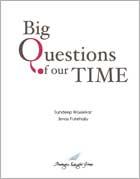Living Beyond Our Means
 |
December, 2008
By Ilmas Futehally
|
On a recent visit to China, the global financial crisis was the centre of most conversations. We debated the cause of it- and answers ranged from greed on Wall Street and the sub-prime crisis to lifestyles not in sync with real earnings, of people living on credit, in debt and beyond their means. The recent announcement of the Chinese government of a stimulus package of Yuan 4 trillion to create domestic demand for Chinese goods also figured a lot in our conversations. Western governments have also been discussing bail out measures and have begun to implement them. So, the financial system in the process of being rescued.
However, another kind of global debt that has not much been discussed in these last few months is the ecological debt. The very concept of which is not understood very well. We are living beyond our means not just in financial terms but also in ecological ones. Ecological debt occurs when humanity uses up more of the ecosystem than its capacity to regenerate.
An interesting concept related to this is that of Earth Overshoot Day, developed by the New Economics Foundation. Earth Overshoot Day fell this year on September 23rd. This day marks the unfortunate milestone when humanity uses up all the resources that the earth can regenerate in one year. Thus from September 23rd to December 31st, we are already using up resources that should have been kept aside for next year. We would require 1.4 earth like planets to support our current lifestyle. We can think back of what happened a few months ago when the impact of living beyond our financial means began to impact our lives. Earth Overshoot Day began a lot earlier.
The earth first went into overshoot mode in 1986, when Earth Overshoot Day fell on the 31st of December. By 1996, humanity was using 15 per cent more resources than what planet Earth could supply, with Earth Overshoot Day falling in November. In 2050, it is expected that Earth Overshoot Day will fall on July 1st. This means that it would take two years for the planet to regenerate what we use up in one year. Can we begin to comprehend where we are heading? The direction looks steeply downwards.
If we look at how different nations compare, the situation looks even bleaker. If everyone in the world lived like residents of the United States, we would need 5.4 earth-like planets to support us. If everyone lived like the Canadians or British, we would need 4.2 or 3.1 earths respectively. If everyone lived like the Indians, we would need 0.4 earths. Is this a new concept of measurement that we will gain popularity in the years to come? Will the we soon be talking about the number of earths that we need to sustain us, rather than the number of acres?
The connection between ecological overspending and climate change is very strong. One of the main reasons for our ecological debt is that humanity is emitting carbon at a faster pace than the atmosphere can absorb. Is this completely different from credit companies and banks offering credit and credit cards to us, even when both sides know that it is going to turn into a bad debt?
As the financial crisis has snowballed into a number of smaller crises, each having a larger impact than the actual event, ecological debt has similar repercussions. Globally, deforestation is taking place at a rate of about 13 million hectares per year without showing any signs of slowing down. Almost 6 million hectares of primary forest land have been lost or modified each year since 1990.
The Food and Agriculture Organization of the United Nations estimated in 2001 that about 75 per cent of our seas have been fished beyond their capacity to regenerate. Some fish stocks such as the Atlantic Cod stocks off the cost of Newfoundland have collapsed entirely due to over fishing. Maybe we should start discussing a bailout package for the fish rather than for the fishing industry?
The �€œDow Jones�€ of animal population, or Living Planet Index has also kept in pace with the recent stock market crash world wide. Over the last 30 years, this index has decreased by over 30 per cent. This implies that the current rate of extinction of plant and animal species is around 1,000 times faster than it was in pre human times. And unlike the stock prices, it is only expected to get worse. By 2050, the rate of extinction of living species is expected to increase by 10,000 times. And this is just part of the story.
Salinity of land has increased dramatically, currently affecting over 260 million hectares of irrigated lands. Soil erosion affects more than 1.1 billion hectares worldwide. Currently, US agricultural practices are destroying soil at a rate 20 times faster than it can be replenished. The percentage of land that has been affected by drought has more than doubled from the 1970s to the 2000s.
Climate change is here to stay. There is not much argument about that. Carbon is perhaps the primary culprit in creating ecological debt, as mentioned earlier. It is estimated that our carbon footprint (a measure of how much productive area it takes to produce what an individual, city, country or world consumes and absorb its waste, using prevailing technology) has increased by 750 per cent since 1961. At present, over 50 per cent of our ecological footprint comes from carbon emissions. This is fast building up to unprecedented levels in the atmosphere. If we are able to create a rescue package for our planet and arrest climate change without depleting our natural resources, we can rebalance the earth�€™s budget. If this budget is left unbalanced, we may not have much of a world left to rescue on other fronts.
Related Publications
-
.jpg&maxw=50)
Big Questions of Our time: The World Speaks, 2016
Download:Big Questions of Our time: The World Speaks _Full Report
-

-

Second Freedom South Asian Challenge 2005-2025, 2005
read more
Download:Second Freedom South Asian Challenge 2005-2025 Full Report
Related latest News
Related Conferences Reports
-

Global Challenges Conference, October 2016
Download:Global Challenges Conference Report
-

Conference on Responsibility to the Future: Business, Peace and Sustainability, June, 2008
Download:Global Security and Economy: Emerging Issues


